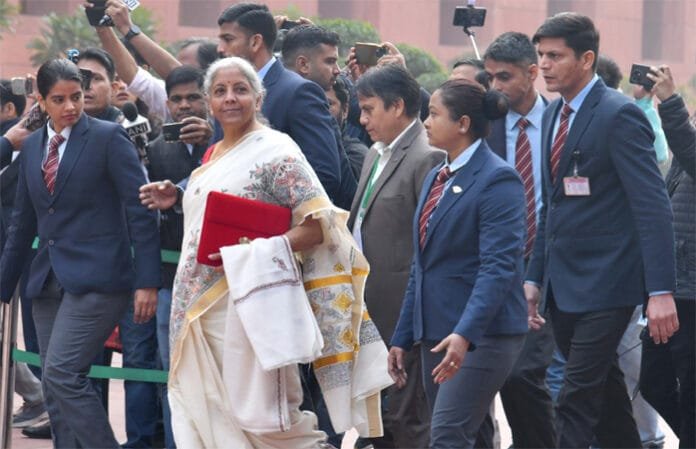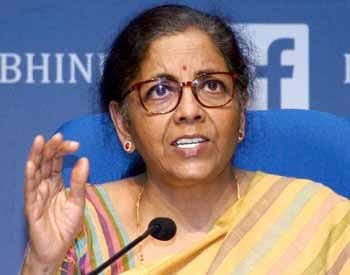Union Budget 2025: Major Tax Relief for the Middle Class as Nirmala Sitharaman Announces Zero Tax Up to ₹12.75 Lakh
A Landmark Budget for the Indian Economy
Finance Minister Nirmala Sitharaman presented the Union Budget 2025 in the Lok Sabha on February 1, 2025, at 11 AM, marking her eighth consecutive budget presentation. This year’s budget is seen as a strategic move to boost economic growth, enhance infrastructure development, and provide substantial relief to the middle class. With key announcements on income tax slab revisions, capital expenditure, fiscal deficit targets, and investment incentives, this budget holds significant implications for taxpayers, businesses, and investors.
One of the most critical highlights of Budget 2025 is the new tax regime, which offers zero income tax on earnings up to ₹12.75 lakh, providing immense relief to salaried professionals and small business owners.
Key Tax Slab Changes in Union Budget 2025
The government has revamped the income tax structure under the new tax regime, ensuring a simpler and more favorable tax system for the middle class. Below are the revised income tax slabs for FY 2025-26:
| Annual Income (₹) | Tax Rate |
|---|---|
| 0 – 4,00,000 | 0% (No Tax) |
| 4,00,001 – 8,00,000 | 5% |
| 8,00,001 – 12,00,000 | 10% |
| 12,00,001 – 16,00,000 | 15% |
| 16,00,001 – 20,00,000 | 20% |
| 20,00,001 – 24,00,000 | 25% |
| Above 24,00,000 | 30% |
This updated tax structure significantly reduces the tax burden on individuals earning up to ₹12 lakh, allowing them to retain more disposable income for investment and savings.
Key Highlights of Budget 2025
1. Fiscal Deficit Targets and Economic Growth Outlook
- The fiscal deficit for FY 2024-25 is set at 4.8%, with a projected reduction to 4.4% in FY 2025-26.
- The government is committed to reducing fiscal imbalances while maintaining strong public expenditure on infrastructure and social programs.
- Economic growth is projected at 7.2% for FY 2025, driven by increased capital expenditure, private investment, and global trade recovery.
2. Investment and Infrastructure Development
- A ₹1.5 lakh crore interest-free loan for states to boost capital expenditure projects.
- A National Infrastructure Growth Fund with a ₹3 lakh crore corpus to accelerate railways, highways, and urban development projects.
- Expansion of the PM Gati Shakti initiative to streamline infrastructure planning and execution.
3. Relief for Middle-Class and Salaried Professionals
- Increase in the standard deduction for salaried employees and pensioners from ₹50,000 to ₹75,000.
- House Rent Allowance (HRA) exemption increased, reducing tax liability for those living in rented accommodations.
- Tax-free income up to ₹12.75 lakh under the new tax regime, providing substantial savings.
4. Corporate and Business Taxation
- Corporate tax rate remains at 22% for domestic companies, ensuring tax stability.
- New MSME tax relief measures, including GST exemptions for small businesses earning up to ₹50 lakh annually.
- Introduction of Startup Tax Incentive Program, offering a 3-year tax holiday for newly registered startups.
5. GST and Customs Duty Reforms
- Simplification of GST filing procedures, reducing compliance burdens for small businesses.
- Reduction of customs duty on electronics, pharmaceuticals, and automotive components to encourage domestic manufacturing.
- Exemption of 36 life-saving drugs from basic customs duty, making essential medicines more affordable.
6. Digital Economy and Artificial Intelligence (AI) Push
- ₹25,000 crore allocation to develop AI-driven digital public infrastructure.
- Launch of National AI Innovation Fund to support startups and research institutions.
- Expansion of 5G and digital payment ecosystems to boost India’s tech-driven economy.
7. Agriculture and Rural Development
- ₹2.2 lakh crore allocated to agriculture and rural welfare programs.
- PM-Kisan direct benefit transfers increased from ₹6,000 to ₹9,000 annually.
- Launch of National Agri-Tech Mission, promoting AI and IoT solutions in farming.
8. Healthcare and Social Welfare
- ₹1.8 lakh crore allocation to the healthcare sector, with a focus on rural healthcare infrastructure.
- Expansion of Ayushman Bharat Yojana, covering 20 million additional families.
9. Education and Skill Development
- ₹1.5 lakh crore allocated for education, focusing on digital learning and AI-based teaching tools.
- Launch of the Skill India 2.0 program, targeting 50 million youth with vocational training and industry partnerships.
- New tax deductions for education loans, making higher studies more affordable.















